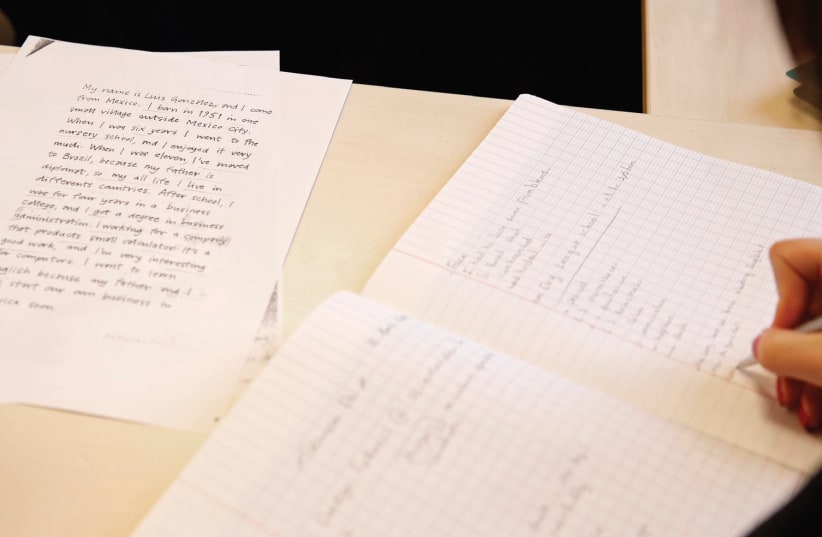The institutions of higher education in the USA have always attracted the students from all over the world. According to the report that was issued by the Institute of International Education, the number of students from Israel who come to the U.S. for their higher education is changing constantly, demonstrating growing trends during last year (Getz, Shacham, Eidelman, & Barzani, 2016). There are many reasons that attract the Israeli students to the American colleges and universities.For example, the U.S.-Israeli academic collaboration and student mobility allow the applicants to choose from a broad variety of respected institutions of higher education. However, once the students from Israel (and, frankly, from any other country) become more and more involved in the learning process, certain problems emerge, which can affect their academic performance. With the rise of the Internet and its wide usage on campus, one of the most pressing issues for the ESL students is plagiarism and academic dishonesty.Perhaps, each student in the education system of the U.S. and beyond it knows what plagiarism is. Academic dishonesty is a serious problem, as not a lot of learners take it seriously enough to follow the rules. Both international students and the native English speakers can have difficulties with understanding what exactly counts as plagiarism and how it can be avoided. Generally, the rules are simple: taking any text without crediting the author is viewed as plagiarism. In practice, this issue can be more complicated.
The most common types of plagiarism in the academic world of higher education include:- Direct plagiarism (copying the source into the paper without any crediting);- Self-plagiarism (copying from the paper that were previously written by a student);-Mosaic plagiarism (borrowing the ideas from other sources, switching the words with synonyms, and not crediting the author);- And accidental plagiarism (unintentionally using borrowed ideas in the paper without crediting the author). This type of academic dishonesty can be viewed as a simple misunderstanding, but ignorance does not absolve a student from responsibility.In the vast majority of the institutions of higher education, the issue of plagiarism is taken very seriously. Even a first offence of a student can result in the expulsion with no right of reentry. So, a question arises: why the universities and colleges pay so much attention to the academic dishonesty of the learners, especially the ESL students? From the global point of view, proper acknowledgment of the past research and crediting of the authors demonstrate the progress that has been achieved in the field. Relying on other sources represents the credibility of the conducted research, and the appropriate citations stimulate further and more in-depth discussion of a subject. In the education system, the students, and especially the ESL students, are expected to learn and absorb these values in order to become a competent member of an academic world (McDonnell, 2003).In the issue of plagiarism, the ESL students are targeted more as, according to the recent research, the international students are subject to cultural differences in summarizing the sources and borrowing the ideas from other authors. The studies on this subject demonstrate that only 28% of the ESL students choose to cite their sources in the beginning of a semester, even if the assignment is directly connected to the summary and assessment of a source (Hammill, 2009). However, by the end of the semester, 100% of the ESL students learn that all sources have to be properly credited and, therefore, understand the concept of academic dishonesty.As you can see, those students who are academically dishonest are not hopeless.Studies show that the ESL students usually turn to plagiarizing as they struggle with time management and the workload of the assignments. It can be twice as hard for them to complete their homework as for the native English speakers. A vast majority of ESL students decide to plagiarize when the stakes are so high that they could fail the course if not this one assignment. Of course, this aim does not justify the means, and the issue of plagiarism among the ESL students has to be approached thoroughly and yet, with an open mind (Hammill, 2009).Here are some tips (provided by experts at CustomWritings.com essay writing company) that will help the international students to remember the basic rules of writing and avoid plagiarism in their papers.Process is more important than the finished product. The paper can consist of the original work with several mistakes in grammar and structure, or it can be entirely plagiarized with perfect language rules. Can you guess what paper will be more appreciated by the teacher?Working on an outline and sources from the start will pay off in the end. Any assignment starts with an idea, and listing the sources and creating bullet points of the future paper will allow the student to know what information was originally borrowed and what ideas were developed later in the process of research (Landau, Druen, & Arcuri, 2002).Always leave more time for proofreading. Sometimes students are under a lot of stress during their learning process, and they might miss certain mistakes or borrowed phrases in their papers. Proofreading the paper the next day helps with finding possible phrases or ideas that were initially overlooked and require citing the original source.Learn the referencing styles. MLA, APA, Chicago – these and several more citation styles are among the most commonly used in the academic writing.Knowing their distinctive features allow the ESL student to be more proficient in the area of academic honesty and have more focus on the contents of the paper.Israelis studying abroad struggle with Plagiarism
Both international students and the native English speakers can have difficulties with understanding what exactly counts as plagiarism and how it can be avoided.
